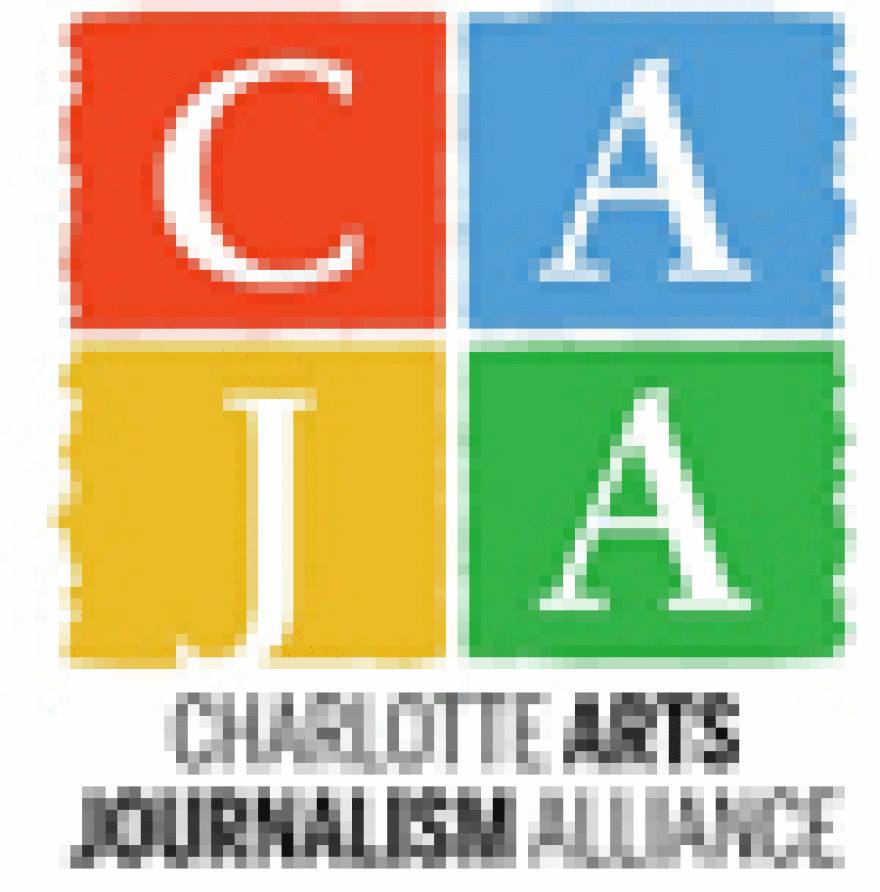The Charlotte Symphony is in the midst of change. For 10 years, the Symphony’s been running a deficit. It is now trying to appeal to a younger and more diverse audience without upsetting its traditional supporters.
The KnightSounds series is part of that effort. It’s a series of informal concerts geared to attracting first-timers to the Symphony. The latest show was called Pop Up Opera it’s an effort that’s still evolving.
Do you remember that VH1 show Pop Up Video? That’s a throwback. It was in the days when music videos were it and VH1 would show the biggest hits from the 1980s and 90s, like Culture Club’s Karma Chameleon, with a pop up that gave background information about the song, musician, and video production.
Last week, the Charlotte Symphony orchestra tried out its own throwback, but this one was to music of the 1800s. The Symphony played selections of operas by Verdi, Mascagni, and Wagner alongside the Oratorio Singers and opera soloists in Pop Up Opera, part of the Symphony’s three-year-old KnightSounds series. As the Symphony played, a screen flashed fun facts about composers’ love affairs, opera mishaps, and tidbits about the lives of Charlotte Symphony musicians.
The atmosphere was casual. Where a loud whisper in a traditional concert would get you the stink eye, guests laughed out loud at the ‘pop ups’.
“A lot of orchestras around the country are having a hard time defining who they want to be in the 21st century,” says Jacomo Bairos, 36, a guest conductor with the Symphony. “And good old Charlotte is doing things very proactively for that. They are trying a bunch of different formatting things to help bring together a new sort of collective of music lovers that will take over the generation that’s currently our greatest supporters, because at some point in time the people who love to come to the symphony just aren’t going to be around much longer.”
This year, the Symphony expects about $2.4 million, about 27 percent of its budget, to come from contributions by individuals and foundations, a number that excludes Symphony ticket revenue. The largest contributions come from the oldest segment of its audience. While this isn’t uncommon in fundraising, as older crowds tend to have more expendable income to donate, Bairos says that symphonies need to keep in mind the generational differences between today’s contributors, and tomorrow’s.
“The people in our generation didn’t come up with the sort of education in the schools and the cultural education and identification toward classical music and symphonic music as previous generations did,” says Bairos. “So what is our role in trying to attract people that are under forty, Generation X, Generation Y, Millennials? Part of our role is to change format, because the music is great, the music isn’t going to change.”
So the KnightSounds concerts are shorter, lasting one hour instead of the usual two. A free drink comes with every ticket, and there’s always a pre and post party reception. For Pop Up Opera, the Symphony set up a photo booth in the lobby of the Knight Theater, equipped with props. Choices included a Viking helmet, a sombrero, and huge sunglasses, among others.
Results of the KnightSounds series are mixed. The crowd is slightly more diverse than at the traditional Classics series. About 14 percent of the KnightSounds audience were newcomers to the symphony, compared to 16 percent for the Symphony's Classics series.
“We have to find out what the audience wants,” says the Charlotte Symphony’s Music Director Christopher Warren Green,"What’s popular and what isn’t. But the important thing is that people are coming and seeing classical music in the kind of light that some people don’t expect it to be.”
In other words, adapting to your surroundings – like a chameleon.

This story is produced through the Charlotte Arts Journalism Alliance (CAJA), a consortium of local media dedicated to covering the arts.






